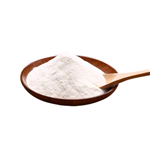
Isocyanic acid 3,4-dichlorophenyl ester
- Product NameIsocyanic acid 3,4-dichlorophenyl ester
- CAS102-36-3
- CBNumberCB9761511
- MFC7H3Cl2NO
- MW188.01
- EINECS203-026-2
- MDL NumberMFCD00002017
- MOL File102-36-3.mol
- MSDS FileSDS
Chemical Properties
| Melting point | 41-43 °C(lit.) |
| Boiling point | 118-120 °C18 mm Hg(lit.) |
| Density | 1.3256 (rough estimate) |
| vapor pressure | 0.2 mm Hg ( 20 °C) |
| refractive index | 1.5750 (estimate) |
| Flash point | >230 °F |
| form | powder to lump |
| color | White to Almost white |
| Odor | wh. to yel. cryst. solid with irritating odor |
| Water Solubility | decomposes |
| Sensitive | Moisture Sensitive |
| BRN | 608325 |
| LogP | 3.88 |
| CAS DataBase Reference | 102-36-3(CAS DataBase Reference) |
| FDA UNII | OZW0B7F1DU |
| NIST Chemistry Reference | Benzene, 1,2-dichloro-4-isocyanato-(102-36-3) |
| EPA Substance Registry System | 3,4-Dichlorophenyl isocyanate (102-36-3) |
| UNSPSC Code | 12352100 |
Safety
| Symbol(GHS) |
 
|
|||||||||
| Signal word | Danger | |||||||||
| Hazard statements | H301-H315-H317-H319-H332-H334-H335 | |||||||||
| Precautionary statements | P280-P301+P310+P330-P302+P352-P305+P351+P338 | |||||||||
| Hazard Codes | T | |||||||||
| Risk Statements | 23-36/37/38-42 | |||||||||
| Safety Statements | 22-26-36/37/39-45 | |||||||||
| RIDADR | UN 2250 6.1/PG 2 | |||||||||
| WGK Germany | 2 | |||||||||
| RTECS | NQ8760000 | |||||||||
| F | 1-8-10-19 | |||||||||
| TSCA | Yes | |||||||||
| HazardClass | 6.1 | |||||||||
| PackingGroup | II | |||||||||
| HS Code | 29291090 | |||||||||
| Hazardous Substances Data | 102-36-3(Hazardous Substances Data) | |||||||||
| NFPA 704: |
|


